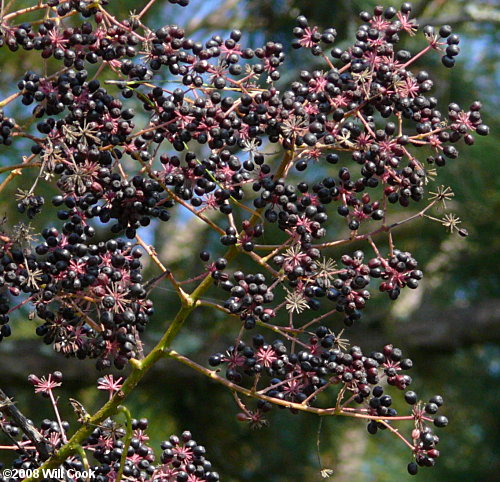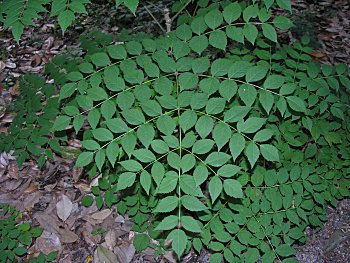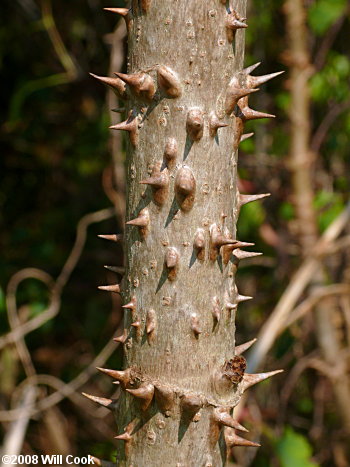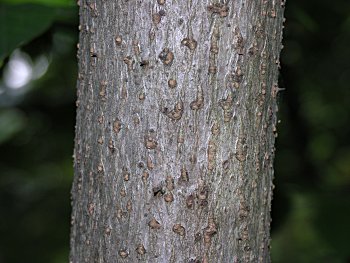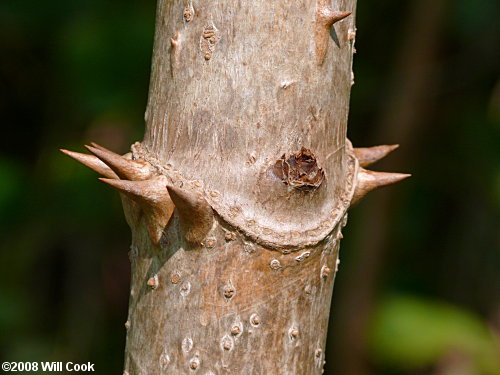
This uncommon but widespread small tree is readily identified by its huge bipinnately compound leaves and prickly trunk.
Craven Co., NC 8/27/06.

Other common names include Hercules Club and Prickly-ash, but these are also used for Zanthoxylum species.
Harnett Co., NC 8/18/05.
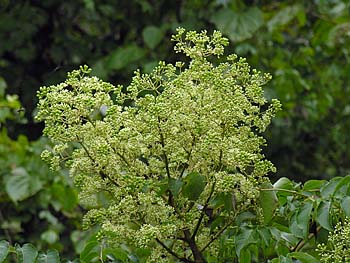
In late summer Devil's-walkingstick produces a showy terminal panicle of flowers, very popular with butterflies and wasps.
Harnett Co., NC 8/18/05.
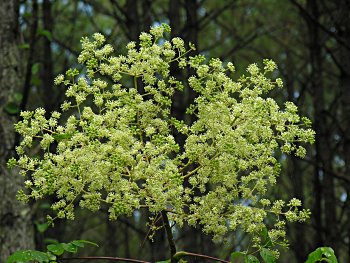
Craven Co., NC 8/27/06.

Inflorescence detail.
Craven Co., NC 8/27/06.

